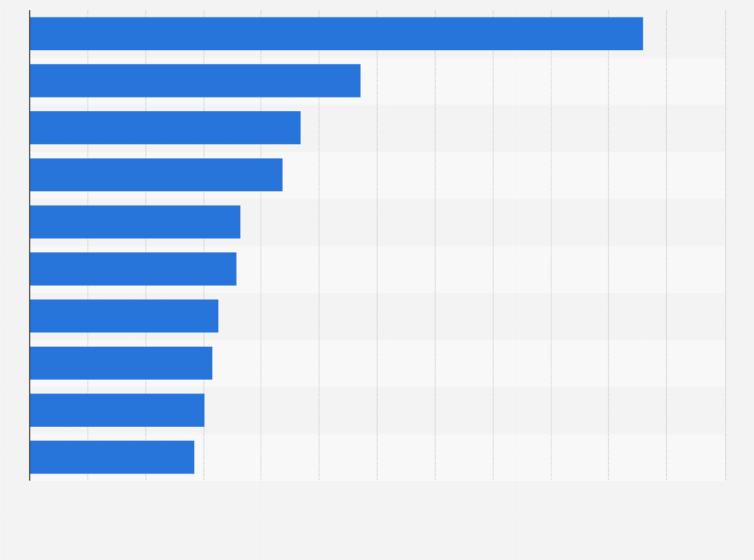Contents:
For some suppliers, their client becomes so large it is just more efficient to open a factory in close proximity. Coca-Cola for example operates a similar function with its bottle manufacturers who operate in close proximity due to the sheer demand. It, therefore, benefits the suppliers and the firm who both benefit from cheaper costs. Economies of scale refer to the lowering of per unit costs as a firm grows bigger. Firms might be able to lower average costs by improving the management structure within the firm.

As it grew through networks, the amount it could charge for adverts equally grew. By negotiating with suppliers for volume discounts, the purchasing firm takes advantage of economies of scale. Synergies as a result of an increase in the scale of production. In brief, internal and external economies are closely related and interdependent on each other. As an industry develops, all the firms engaged in it decide to divide and sub-divide the process of production among themselves. For instance, in case of moped industry, some firms specialize in rims, hubs and still others in chains, pedals, tires etc.
Economies of scale are cost advantages reaped by companies when production becomes efficient. Is the process of transforming raw materials and other components into finished products for sale. When a company produces additional goods that share the same fixed and variable resources the company uses for its original product, it lowers the overall cost of making a variety of products.
The large scale firms can use modern machinery and get many advantages. The large scale firms don’t need much labour force due to the use of machines in the firm. The large scale firms can use the raw materials effectively and they use wastage of raw materials to produce subsidiary products. Such firms need to balance the economies of scale against the diseconomies of scale. For instance, a firm might be able to implement certain economies of scale in its marketing division if it increased output.
Economies of Scale: Definition, Types & Examples
In some productions, an increase in the size of the plant reduces the average variable cost, thanks to the energy savings resulting from the lower dispersion of heat. When a company follows large scale production by increasing the production with the use of more capital and technology at the same time lowering the costs, it will gain certain advantages. These advantages which are gained by the companies are called as “Economies of Scale”. The firm benefits from being able to make bulk purchases at a lower price, thereby benefiting from lower costs. However, employees struggle to find the right person to contact out of the thousands of colleagues. In turn, we can see what is often referred to as ‘diseconomies of scale’, where businesses start to become more inefficient.
If borrowing costs decline across the entire economy because the government is engaged in expansionary monetary policy, the lower rates can be captured by multiple firms. Companies can still take relatively greater or lesser advantage of external economies of scale. Nevertheless, internal economies of scale embody a greater degree of exclusivity. If, however, the firm is not a perfect competitor in the input markets, then the above conclusions are modified. Conversely, if the firm is able to get bulk discounts of an input, then it could have economies of scale in some range of output levels even if it has decreasing returns in production in that output range. When an industry expands in response to an increase in demand for its products, it experiences some external economies as well as some external diseconomies.

They will, therefore, avoid specialty grades even though they have higher margins. Often smaller manufacturing facilities remain viable by changing from commodity-grade production to specialty products. Economies of concentration occur when many firms are situated in the same place. The concentration of industries leads to the development of transport facilities, financial institutions, financial facilities, subsidiary companies at the place where the firms are located. Large-scale firms have the greater ability to manage the business risks.
In small companies, there may be a nice community feel whereby everyone knows each other and are all friendly. When a company starts to grow, it is easy for employees to feel like they are ‘another cog in the wheel’. They are something small and insignificant in this large company – which can contribute to poor employee engagement and performance. For example, an airline may invest $20 million into a new airplane. If it serves one customer, it must charge $20 million to recoup its costs.
Video Explanation of Economies of Scale
It may also be afforded lower interest rates as well as greater availability of credit. Whether this is financial contributions like in the US, or just threatening close down factories. Thousands of jobs can be at risk, so governments can look favourably on their demands.
A decrease in cost per unit of output enables an increase in scale. At the basis of economies of scale, there may be technical, statistical, organizational or related factors to the degree of market control. Any increase in output beyond Q2 leads to a rise in average costs.
- External economies of scale can happen because of positive and negative externalities.
- Conversely, if the firm is able to get bulk discounts of an input, then it could have economies of scale in some range of output levels even if it has decreasing returns in production in that output range.
- Experts are able to reduce the costs of production under their supervision.
- In some productions, an increase in the size of the plant reduces the average variable cost, thanks to the energy savings resulting from the lower dispersion of heat.
- External economies are slightly different from internal in the fact that the occur outside, independently of the firm, but within the industry.
- In this article, we are going to discuss the differences between internal and external economies of scale.
The cost of a unit of capacity of many types of equipment, such as electric motors, centrifugal pumps, diesel and gasoline engines, decreases as size increases. The Large-scale firms get financial assistance easily in the form of borrowings, loans, credits at a low rate of interest. As a company grows larger, its presence in the market also increases. Customers start to become aware of its brand and develop trust in it – which allows the firm to establish its position in the market.
Economics
Also see various engineering economics texts related to plant design and construction, etc. In structural engineering, the strength of beams increases with the cube of the thickness. A big company such as Nike or McDonald’s faces a bigger backlash from paying staff low wages or using cheap labor from abroad. Yet a small local store doing the same may not face such criticisms.
For example, it’s far cheaper and efficient to serve 1,000 customers at a restaurant than one. You have staff costs, the cost of rent for the land, and perhaps any advertisement costs. As a business, you don’t want to be paying staff to sit idle, nor pay thousands in rent just to serve one customer.

This concept is the opposite of external economies of scale where all competitors in a market gain efficiency in their processes due to factors that they cannot control. Internal economies refer to a situation where, by actions of the company, economies of scale are generated. Thus, with an increase in production volume, the cost of manufacturing an additional unit of the commodity decreases. As production increases, the fixed cost per cake decreases right away, because those expenses stay the same. Variable costs for ingredients may increase at first but can shrink over time, as a bakery is able to produce more and more cakes for less, further lowering its cost per cake.
Advances in technology can benefit companies that leverage it to increase production. Landes describes the problem of new steel mills in late 19th century Britain being too large for the market and unable to economically produce short production runs of specialty grades. The old mills had another advantage in that they were fully amortized. Drag loss of vehicles like aircraft or ships generally increases less than proportional with increasing cargo volume, although the physical details can be quite complicated. Therefore, making them larger usually results in less fuel consumption per ton of cargo at a given speed. Economies of scale exist whenever the total cost of producing two quantities of a product X is lower when a single firm instead of two separate firms produce it.
When combining lower costs and higher customer volumes – higher profits result. The bigger a company becomes, the more customers it can serve – thereby allowing it to reduce costs per head. For example, companies with high fixed costs tend to benefit the most as these costs can be spread out per customer. Watch this short video to quickly understand the main concepts covered in this guide, including the definition of economies of scale, effects of EOS on production costs, and types of EOS. Internal economies of scale can be reflected in the long-run average cost curve as the movement beside the curve.
This is an example of diseconomies of scale – a rise in average costs due to an increase in the scale of production. Thus, firms employing less than 10,000 workers can potentially lower their average cost of production by employing more workers. This is an example of an external economy of scale – one that affects an entire industry or sector of the economy. Economies of scale is related to and can easily be confused with the theoretical economic notion of returns to scale.
External Economies of Scale
If a government wants to support the growth of an industry, such as renewable energy, it may offer support to companies in that field. Better machines, technology, or labor allow a company to produce more faster. If a bakery is now making 10 cakes difference between internal and external economies a day instead of five, it’s going to have to buy twice the amount of flour, eggs, and other ingredients it needs — These are variable costs. But since the bakery is now buying more items at once, it may be able to get a discount on bulk orders.
Before making decisions with legal, tax, or accounting effects, you should consult appropriate professionals. Information is from sources deemed reliable on the date https://1investing.in/ of publication, but Robinhood does not guarantee its accuracy. Outsourcing work to lower-wage areas, finding cheaper materials, and scaling down production costs.
In practice, capital cost estimates are prepared from specifications, budget grade vendor pricing for equipment, general arrangement drawings and materials take-offs from the drawings. This information is then used in cost formulas to arrive at a final detailed estimate. Abstract This thesis presents the results of the research within the field of Open Innovation. The research is based on a theory developed by Vanhaverbeke on the underlying motivations of companies to adopt the Open Innovation model. This thesis shows how a restructuring can silently drive a company or division towards Open Innovation. Case studies (at Philips Applied Technologies and Océ Corporate Research) have been conducted to investigate the divisions’ transition towards Open Innovation.
External economies of scale are apply to the industry as a whole. It is purely based on the external factors which common for the entire industry. Those are typically the unit cost advantages for the company from the advancement of their industry. In internal economies of scale long-run average cost curve falls due to the expansion in the level of production or plant size, up to a particular level.
So when an airline grows bigger, it is able to attract more customers and thereby reduce the cost per customer. As a firm increases its scale of production, the firm enjoys several economies named as internal economies. Basically, internal economies are those which are special to each firm. For example, one firm will enjoy the advantage of good management; the other may have the advantage of specialisation in the techniques of production and so on. That is, internal economies are a type of economies of scale that originate in a company as a result of the decisions of its management.

